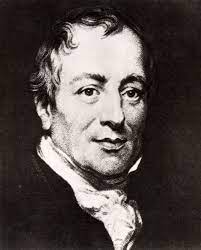
To deal with the economic issues of property, the work by David Ricardo (1772 – 1823) provides a dimension on how trade and the relative price will affect growth. In his book on the Principles of Political Economy and Taxation (Ricardo, 1817), economic concepts such as rents (and profits, and wages) are applied to theories of land capacity and population. Rents are viewed as the difference between the produce obtained by the employment of two equal quantities of capital and labour. So if land could be used for either cultivation (a price and quantity willing to be paid by a labourer) or for residential purposes (a price and quantity willing to be paid by the household), the rent charged would be the difference in these different land-use options.
At the forefront of Ricardo’s thinking was a conclusion that land rent (the reward for owning land) grows as the population increases. This would mean that with population growth increasingly concentrating in urban areas consequences would involve a rise in rents of real estate values and a rise in rents of land used for consumption goods. This would generate over a period of time an aggregate appreciation in the value of property and necessity goods such as food.
Ricardo (Ricardo, 1817) also was instrumental in developing the concept of comparative advantage, where at a national scale trade could increase economic growth as long as each nation had different relative costs for producing the same goods. He argued for comparative advantage as all nations could benefit from free trade, even if a nation was less efficient at producing all kinds of goods than its trading partners. This could mean that if a developing nation had an abundance of low-cost materials for manufacturing goods (e.g. Silicon), it could trade on this comparative advantage in order to rebalance its other resources (land, labour, capital, entrepreneurship) that need appropriation or greater efficiency for economic development.
Comparative advantage theory has counter-weight problems in that the type of advantage chosen will form to meet the needs of the rich and powerful and not be a bi-lateral exchange. For instance, the type of comparative advantage chosen such as a nation concentrating on silicon trading may eventually have development gains (and adding value) by manufacturing silicon rather than just natural resource extraction. Although the nation may still be subservient to other nations as during this development shift, wealthier nations will be in a stronger trading position to purchase manufactured silicon parts for a higher added value service sector.
This theory is further complicated in that different resources for comparative advantage will be desired during different phases of the development process. For instance, the trading advantages from steel during a global age of heavy manufacturing will be similar to the trading advantages of silicon during a digital revolution. However, the rules of trading and relative prices of commodities will be very different and in greater control of the more developed nations than in previous decades, especially if a greater inequality exists between the developed and developing nations. What is referred to as a Ricardian vice may ring true in that rigorous logic does not always provide a good economic theory and as a result alternative theory must be sought.